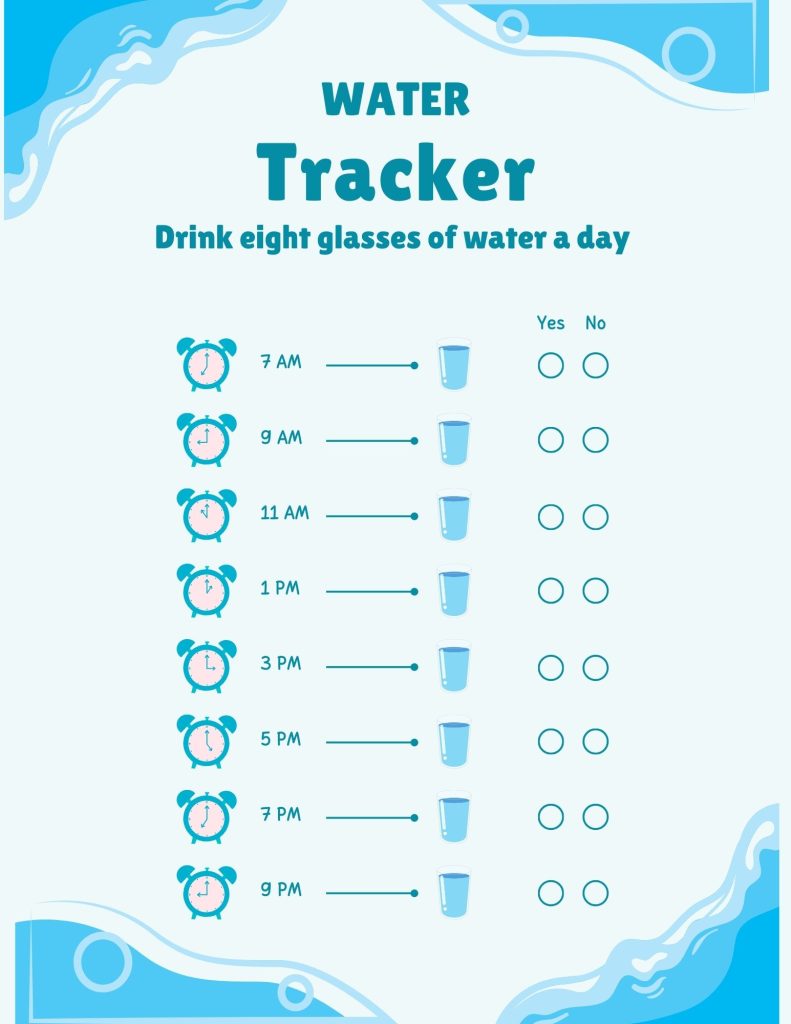Kidneys – (Body Part Specific Badge) Resources and Unit Study
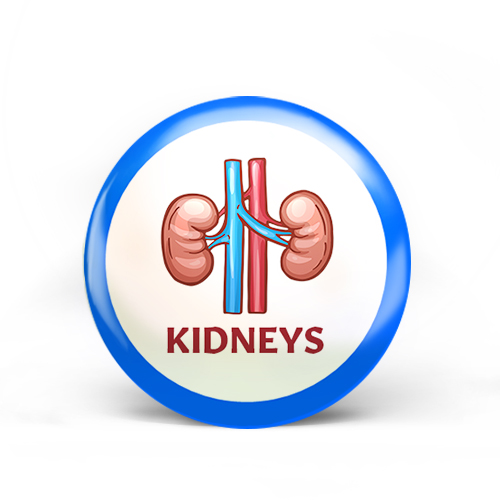
If you are working on your Body Part Specific badge for Kidneys, the following resources will help you learn about this vital organ. You may also consider working on badges such as Human Body, Health and Fitness and Nutrition badges at the same time.
Where Are Your Kidneys?
The kidneys are two bean shaped organs located in your body, one on each side of your spine, below your ribcage. Totschooling has a great free printable to show kids where 7 major organs, including the kidneys are located within the body.
To Do: Print out the human body organs printable from Totschooling. While you can use the printable as instructed for a simple cut and paste diagram or puzzle, they can also be turned into matching style games. If you have a Frontier Girls troop, Quest Club or Homeschool Co-op with lots of kids, pass out one puzzle piece to each child and then challenge them to find their match (or matches if using the 3 piece puzzles) as quickly as they can.
Fulfills Preschool Requirement #1
What Do Kidneys Do?
So what are your kidneys exactly and what is their purpose? According to the National Kidney Foundation, kidneys:
- Help remove waste and excess fluid from blood
- Filter the blood, keeping what your body needs and removing the rest
- Control the production of red blood cells
- Make vitamins that control growth
- Release hormones that help regulate blood pressure
- Help regulate blood pressure, red blood cells, and the amount of certain nutrients in the body, such as calcium and potassium.
How Do Kidneys Work?
- Blood enters the kidneys through the renal artery from the heart
- Blood is cleaned by passing through millions of tiny blood filters in the kidneys
- Waste material passes through the ureter and is stored in the bladder as urine
- Newly cleaned blood returns to the bloodstream by way of veins
- Bladder becomes full and urine passes out of the body through the urethra.
The video series below is a 5 part series for kids on the kidneys from the National Kidney Foundation.
- Lesson 1: What are the kidneys
- Lesson 2: Keeping your kidneys healthy – Healthy eating
- Lesson 3: Keeping your kidneys healthy – Choosing Water
- Lesson 4: Keeping your kidneys healthy – Get moving
- Lesson 5: Kidney disease
Fulfills optional requirement #4
To Do: Play the “Kidney Function Relay Race” game. Here’s how to play:
Materials:
- A set of beanbags (one per team)
- A set of cards with words describing various kidney functions or things that effect the kidneys (click on the image below to download)
- Two buckets labeled “healthy kidney” and “sick kidney”
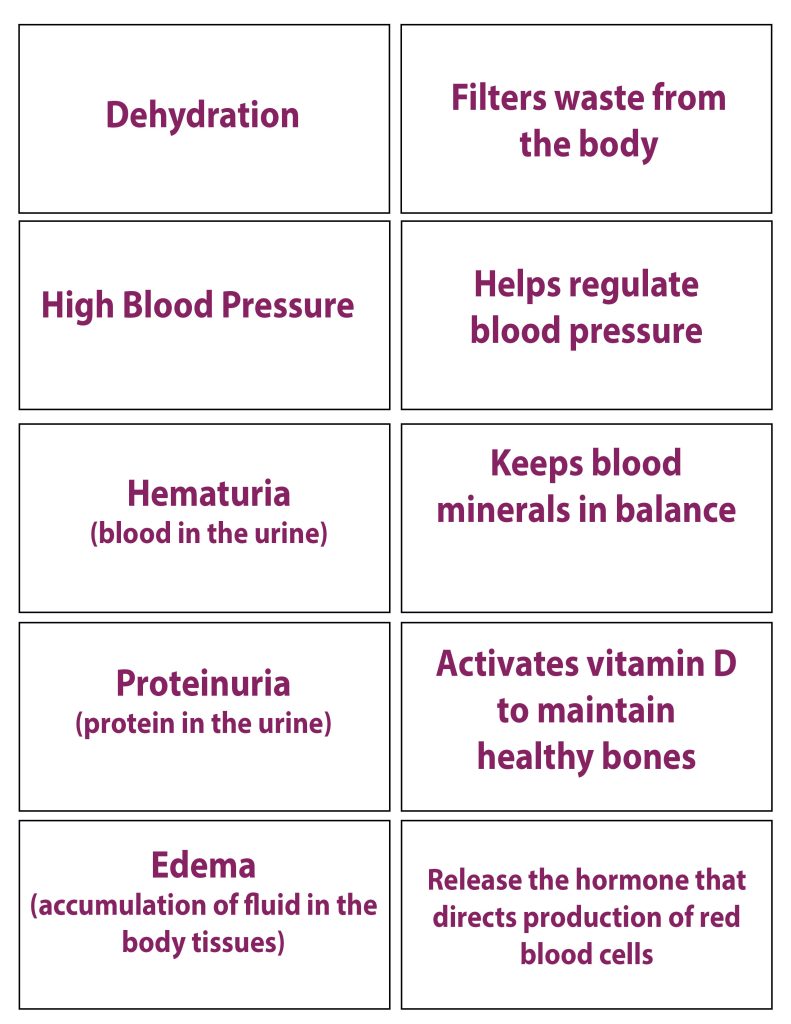
Instructions:
- Divide the class into two or more teams and line them up behind a starting line.
- Place the buckets labeled “healthy kidney” and “sick kidney” at the other end of the room.
- Give each team a beanbag and a set of kidney function flashcards.
- On your signal, the first player from each team puts a beanbag on their head and runs to the other end of the room, picks a kidney function flashcard from a pile, and races back to the starting line with the beanbag still balanced on their head. If the beanbag falls off on the way to the table, they must come back and start again. If it falls off coming back from the table, they must go back to the table and start again from there.
- Once the player returns to the starting line, they must place card in the correct bucket to match the kidney function or symptom flashcard with either the “healthy kidney” or the “sick kidney” bucket.
- If the player matches the flashcard correctly, they hand the beanbag to the next player in line, who repeats the process.
- If the player matches the flashcard incorrectly, they must return to the table and back, placing it in the correct bucket upon their return before handing the beanbag to the next player in line.
- The first team to successfully match all of their kidney function flashcards and reach the finish line wins the game.
Fulfils optional requirement 16 and preschool requirement #1
Kidney Filter – Science Project
The main role of the kidney is to filter out the toxic waste products from food and reabsorb water and nutrients back into the body. The following experiment shows how filters work.
Supplies:
- 2 clear plastic cups
- 1/4 cup dirt or soil
- cotton balls
- strainer
- Cheese cloth
- Paper Towel
- Coffee Filter
- scissors
- tape
Place the dirt into one cup. Add water until the cup is about 1/2 full. Mix well. This represents unfiltered blood before it is run through the kidneys.
Challenge: Create a filter that will filter out all the dirt from the water. Start with a strainer and then modify it using cloth, cotton balls, coffee filters, etc. until you can run the water through and it comes out clear. Discuss why each filter you tried did or did not work. How difficult was it to do. How many times did you need to filter the water before it ran clear?
How many times did you need to run your water through your filter before it was clear? How much water was lost in the process?
Fulfills Level 2 requirement #2
Make a Kidney Cake Diagram
Before making your cake, print out the kidney diagram below to use as a key.
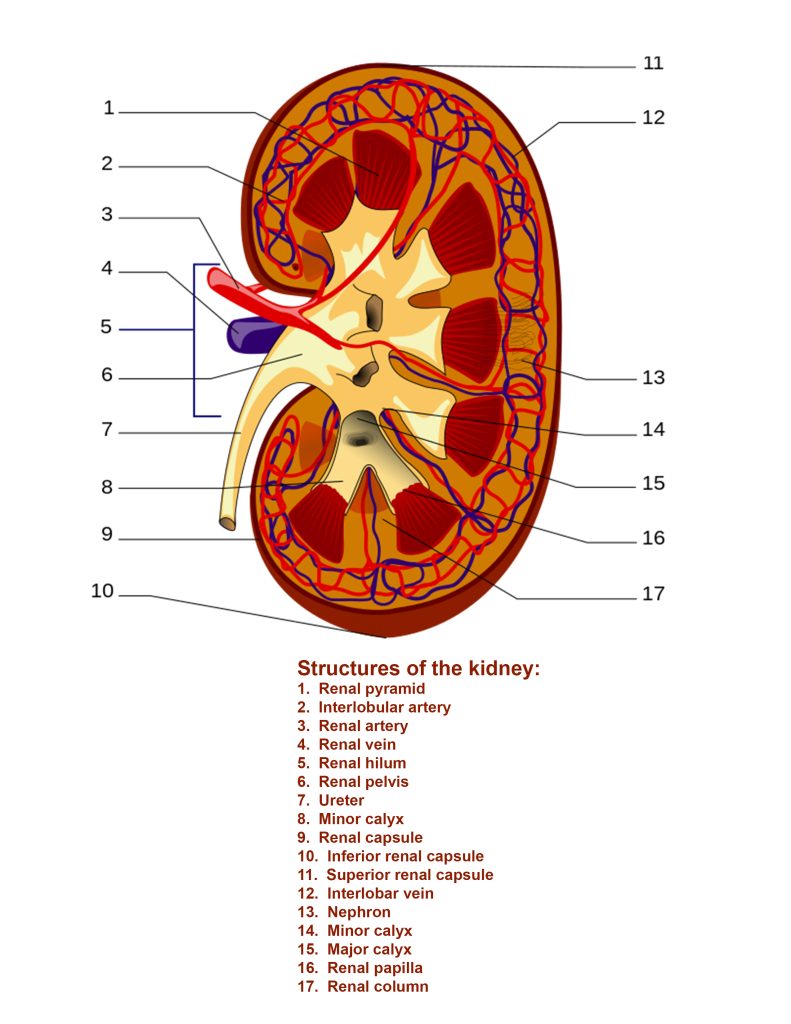
Supplies:
- Your favorite cake recipe and all ingredients to make it
- Chocolate frosting
- Pink frosting
- Yellow frosting
- Red frosting
- Blue frosting
- Strawberries sliced in half
- Small pieces of paper taped to toothpicks with the following parts of the kidney: Renal Pyramids, Renal Capsule, Renal Pelvis, Renal Vein, Renal Artery, Interlobel Artery, Interlobel Vein, Major Calyx , Minor Calyx and Ureter
Bake your favorite cake recipe in a round cake pan. Once cool, cut the cake in half and cut a small triangle out of the center of each straight side. Then using a knife, round the top and bottom as shown until you have two kidney shaped cakes. You will only need one kidney cake per person for this project.
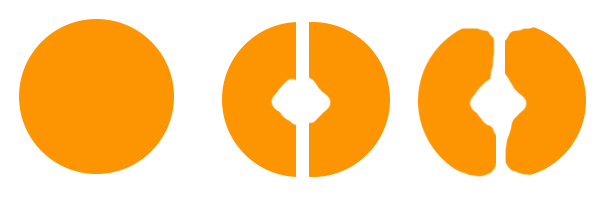
Frost the top of the cake with the pink frosting and then frost the edges with chocolate frosting. This represents the dissection of a kidney.
Now it is time to start creating your kidney model. Use the strawberries to represent the Renal Pyramids and place them on top of the cake around the outer edge. Using the yellow frosting, pipe in the Calyx, Renal Pelvis and Ureter on each kidney. If you do not have cake piping bags, you can put your frosting in a small ziplock bag and cut off a small piece of the corner to use as a piping bag.

Next use the red food color to pipe in the Renal artery and Interlobel Artery and the blue to pipe on the Renal Vein and Interlobel Vein. Use the paper flags you made with the diagram terms to correctly label each part of your cake. Take a photo of your creation and then EAT!
Fulfills optional requirement #3 or optional requirement #6

Kidney Vocabulary Game
Supplies:
- 22 Index cards
- Pen
- 2 tables
Learn the following vocabulary words. Then write each vocabulary word on one index card and the definition of the word on another. Place two tables at opposite ends of the room. On one, spread the word cards face up and on the other the definition cards. On “Go!” start a stopwatch and run to the first table and grab a card, then run to the second table and find the correct definition and bring them back to start. If correct, continue until all cards have been matched. Time yourself and see how quickly you can match all cards.
If more than one person is playing, that can be played as a relay.
- Glomeruli – groups of small blood vessels that filter your blood and pass the filtered substances to the renal tubules
- Nephrons – small filtering units in the kidney made of glomeruli and tubules
- Renal Tubules – Tiny tubes that reabsorb and return water, nutrients and minerals back to your body while removing waste, excess fluid and acid and sending them to the kidney’s collection chambers.
- Kidney Capsule – the protective cover around your kidney
- Renal Cortex – Outer layer of the kidney where the nephrons begin. The renal cortex also helps to create red blood cells in your bone marrow.
- Renal Medulla – The inner part of the kidney
- Renal Artery – the blood vessel that carries blood from the heart to the kidneys.
- Renal Vein – the blood vessel that carries blood from the kidneys back to the heart.
- Ureters – tubes that take the urine from the kidneys to the bladder
- Urine – liquid produced by the kidneys made up of the toxic waste products of food and excess water from the blood.
Fulfills optional requirement #15

Importance of Water
Your kidneys help remove waste from your blood, but if you become dehydrated your kidneys cannot work as efficiently . Kidneys can become permanently damaged if you are dehydrated too often so making sure you drink enough water everyday plays a large role in your health. Dehydration contributes to both kidney stones and urinary tract infections and can also clog your kidneys with proteins making them less efficient and may even make them stop working altogether.
To Do: Use the following two charts to track your water intake each day for one month. The goal is to drink 8 glasses of water everyday, but drinking 8 glasses all at one time does not keep you hydrated. The first chart is to make sure you drink water all throughout the day while the second chart will see how close you are to the goal of 8 glasses daily. Each time you have a glass of water, mark the time you had it on the daily chart and then color in one of the water glasses on the 30 day challenge chart. At the end of 30 days, how did you do? Did you notice improvement in your drinking habits as the challenge wore on?
Fulfills Level 1 requirement #1
